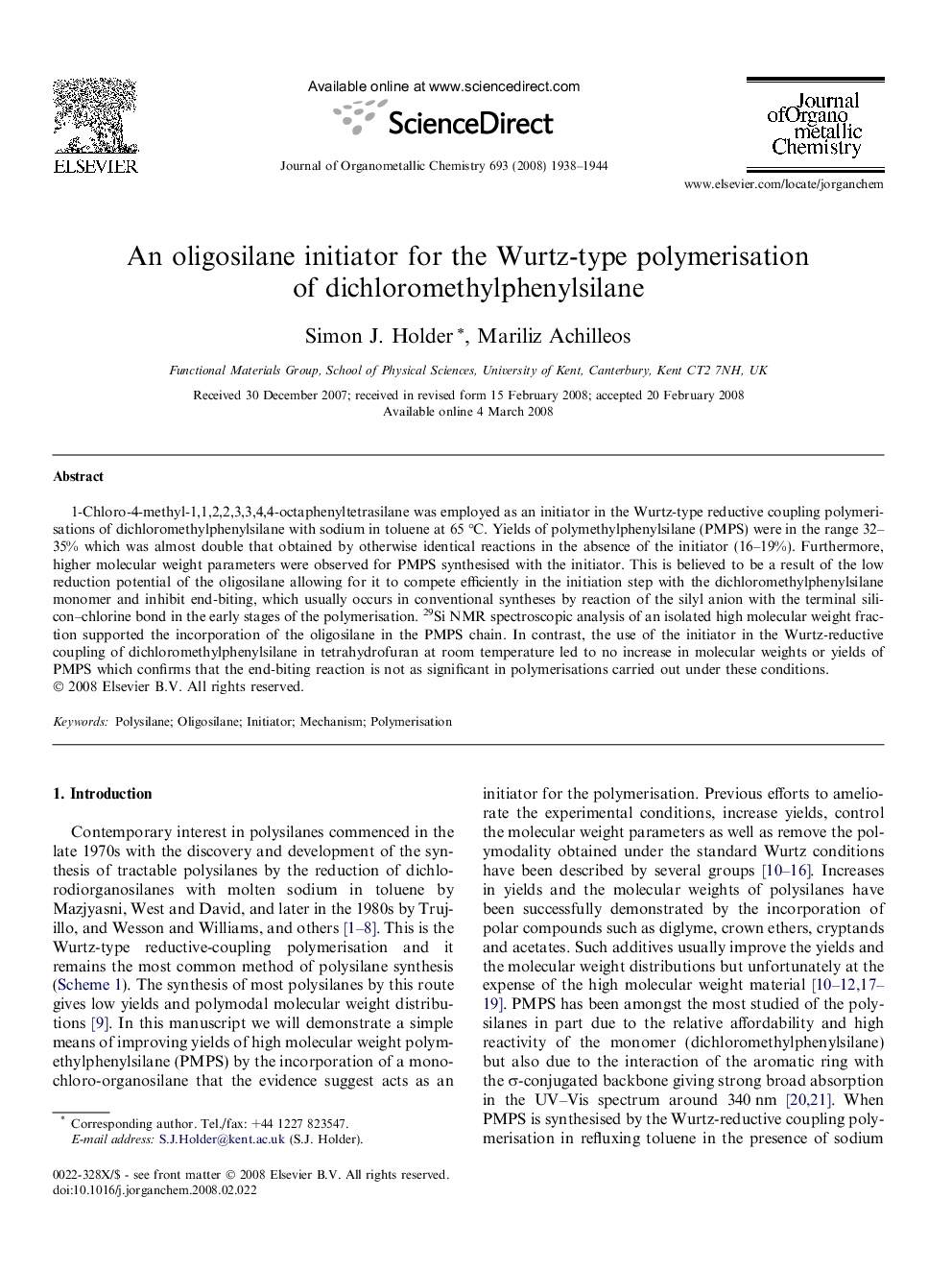| Article ID | Journal | Published Year | Pages | File Type |
|---|---|---|---|---|
| 1324964 | Journal of Organometallic Chemistry | 2008 | 7 Pages |
1-Chloro-4-methyl-1,1,2,2,3,3,4,4-octaphenyltetrasilane was employed as an initiator in the Wurtz-type reductive coupling polymerisations of dichloromethylphenylsilane with sodium in toluene at 65 °C. Yields of polymethylphenylsilane (PMPS) were in the range 32–35% which was almost double that obtained by otherwise identical reactions in the absence of the initiator (16–19%). Furthermore, higher molecular weight parameters were observed for PMPS synthesised with the initiator. This is believed to be a result of the low reduction potential of the oligosilane allowing for it to compete efficiently in the initiation step with the dichloromethylphenylsilane monomer and inhibit end-biting, which usually occurs in conventional syntheses by reaction of the silyl anion with the terminal silicon–chlorine bond in the early stages of the polymerisation. 29Si NMR spectroscopic analysis of an isolated high molecular weight fraction supported the incorporation of the oligosilane in the PMPS chain. In contrast, the use of the initiator in the Wurtz-reductive coupling of dichloromethylphenylsilane in tetrahydrofuran at room temperature led to no increase in molecular weights or yields of PMPS which confirms that the end-biting reaction is not as significant in polymerisations carried out under these conditions.
Graphical abstract1-Chloro-4-methyl-1,1,2,2,3,3,4,4-octaphenyltetrasilane was employed as an initiator in the Wurtz-type reductive coupling polymerisations of dichloromethylphenylsilane with sodium in toluene at 65 °C. Yields of polymethylphenylsilane were in the range 32–35% which is almost double the yield obtained by otherwise identical reactions in the absence of the initiator (16–19%).Figure optionsDownload full-size imageDownload as PowerPoint slide
